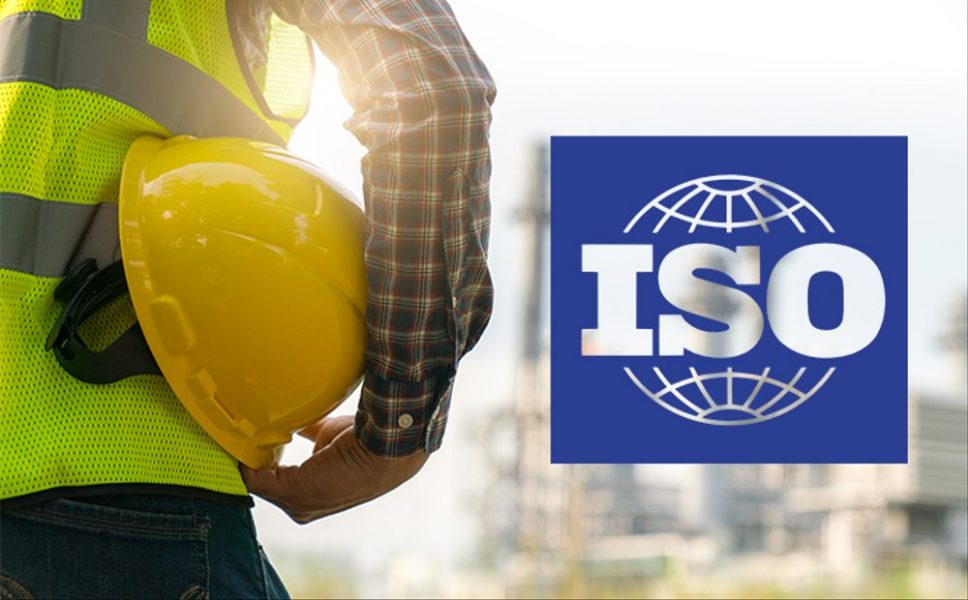The 8 key differences between OHSAS 18001 and ISO 45001

If your business is accredited to OHSAS 18001, you have until March 12, 2021 to make the transition to its replacement standard, ISO 45001:2018. Businesses not transitioned to ISO 45001 by that date will find themselves without an accredited occupational health and safety management system and the benefits that come with it. Understanding and reacting to the key differences between OHSAS 18001 and ISO 45001 is the most important dimension of your transition – so we’ve listed the 8 main areas to consider.
1. Annex SL
ISO 45001:2018, like most other ISO standards, has adopted the Annex SL High Level Structure (HLS).
Annex SL is designed to simplify integration with other management systems like ISO 9001 and 14001 with consistent language and matching sub-clauses, making it easier for you to build and manage an integrated business management system.
Understanding Annex SL isn’t just crucial for ISO 45001 – it’s the core of any modern ISO standard you can expect to accredit to in the future, so you should start your reading as soon as possible.
2. The Role of the Management Representative
Under OHSAS 18001, the operation of the occupational health and safety management system could be delegated by senior management to a representative.
Under ISO 45001, the role of the management representative is permitted but strongly discouraged, for 3 main reasons:
- Like all modern ISO standards, 45001 places a strong emphasis on risk. Investing control of the H&S system in a single employee should be recognized as a risky set-up, particularly for larger businesses.
- On the other hand, divesting responsibility and buy-in to multiple employees should be recognized as an opportunity for continuous improvement.
- Most importantly, top management can no longer distance themselves from the operation of the health and safety management system by simply delegating a representative.
3. Enhanced Role of Top Management
Clause 5 of ISO 45001 pushes and encourages the incorporation of health and safety into the broader management system of your organization. That means senior management are now expected to take a stronger top-down leadership role, driving performance improvements into action and taking responsibility for the protection of their employees.
But what does this mean in practice? Engagement can be demonstrated in several ways, including:
- Frequent management reviews of the health and safety system performance
- Management initiating and participating in safety audits, actively collecting feedback from employees for improvement and corrective/preventive action
- Adequate resources, such as the latest PPE or quality management tools, being actively invested in
- Issue-raising, hazard-spotting and constructive suggestions being encouraged, praised and rewarded
4. Health and Safety Culture
Your transition from OHSAS 18001 to ISO 45001 should be designed to embed health and safety responsibility and engagement as widely as possible.
A natural by-product of the removal of the management representative position and greater top-down focus should be a greater proportion of your staff understanding how they can support and contribute to a culture of health and safety.
This goes beyond just training your staff on health and safety procedures and expecting them to stick to them. Instead, health and safety should be seamlessly part of ‘business as usual,’ with all workers aware of the objectives and advantages of a safe and efficient workplace and empowered to contribute to it.
A robust health and safety culture should comprise:
- Integrating your H&S vision into recruitment
- Giving staff increased participation and consultation, testing new initiatives before implementation and building policies around staff feedback
- Utilizing your workforce as ‘moles,’ in the habit of flagging risks and opportunities alongside their day-to-day work
- Openly sharing accident investigation and enquiry results, as well as planned changes and developments
5. Risks, Hazards and Opportunities
OHSAS 18001 focused on controlling hazards.
ISO 45001 follows the general direction of recent ISO standards by encouraging ‘risk-based thinking’: a more proactive, flexible and preventative approach based on remedying a broader range of risks before they materialize.
Chapter 6.1 of the standard discusses risks in the same breath as opportunities, encouraging businesses to scope, evaluate and address opportunities for continuous improvement just as they’d identify and treat risks. Rather than simply reacting to non-conformances, your HSMS should use them positively to drive your continual improvement cycle.
And the influence of Annex SL permeates into the risk focus of ISO 45001 – so the context and external influences on your organization should be as much a part of your H&S risk register as a piece of machinery.
For instance, a regulatory or legal development that prompts you to change an ingredient or step in your manufacturing process might introduce a fresh risk to the workers following that process.
ISO 45001 also includes an expanded section on preparing for and responding to emergency situations.
In short, you should go beyond simple pinch points and slip hazards and adopt a more holistic understanding of health and safety risk.
6. Improved Planning
Closely connected to risk-based thinking is a stronger emphasis on planning and setting objectives.
Your H&S objectives should take resource availability, responsible staff, relevant KPIs and timelines into account.
And ISO 45001 is more explicit than OHSAS 18001 about formalizing organizational goals, linking them to health and safety objectives, setting priorities and establishing documentation.
7. A New Definition of ‘Health’
Health and safety tends to make people think in purely physical terms. And while mental health isn’t explicitly mentioned in ISO 45001, the standard is designed to be flexible enough to map onto your specific company needs.
So if mental wellbeing is a concern for your business, there are several areas of ISO 45001 you can leverage for a more integrated HSMS protecting body and mind:
- Clause 4.2: the needs of workers and interested parties can include mental wellbeing and can be included in your health and safety policy.
- Clause 6.1.2.1: as part of your hazard/risk identification, you can now consider factors such as employee stress and fatigue and how these might impact your business processes and functions.
- Clause 6.2: mental health can be integrated into your H&S improvement objectives and plans and tracked as a KPI through mechanisms like annual reviews and satisfaction surveys.
- Clause 8.1.2: mental health risks can be treated, and their residual risk scores lowered like any other risk. For instance, mentally taxing processes can be rotated and divided among employees to prevent excessive stress.
8. Terminology Updates
Of the 37 terms and definitions included in ISO 45001, only 3 are identical to those in OHSAS 18001.
New definitions include ‘worker’ and ‘workplace,’ while ‘documents and records’ are now ‘documented information’ to reflect the wider focus of a 45001 health and safety system.
Related Posts




